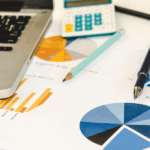The United States is poised for a significant economic shift as President Donald Trump prepares to implement tariffs on international imports starting August 1, after a temporary pause. These plans, dubbed “Liberation Day” tariffs by the administration, could mark one of the largest changes in trade policy in recent years. The percentages indicated are higher than historical rates, with countries like the UK, EU, and Japan now facing tariffs although successful negotiations have somewhat reduced the initially proposed rates. However, major trade partners such as China, Canada, and Mexico remain caught in the web of looming tariffs, showing a complex landscape for international trade relations.
Previously, the U.S. sought to renegotiate trade deals under Trump’s administration for what was described as more favorable terms. Despite entering numerous negotiations, the high tariffs on various imports signify a departure from previous more lenient policies. Initially, a 90-day pause postponed the full implementation of tariffs, but beginning on August 1, most nations will face these increased import duties. This delay allowed more time for diplomatic dialogue but was not entirely effective in mitigating economic concerns. Economists have repeatedly expressed skepticism over Trump’s claims that these measures would balance trade discrepancies due to the complex nature of global capital flows.
How will markets respond to the August 1 deadline?
The impending tariff implementation has already induced volatility in the markets. Financial indices such as the S&P 500 and Nasdaq experienced significant downturns following the initial announcement, reflecting investor apprehensions. Investors are uncertain whether President Trump will adhere to this stringent trade policy or if another extension is possible. “No extensions. No more grace periods. August 1, the tariffs are set,”
declared Commerce Secretary Howard Lutnick, underscoring the administration’s firm stance.
Will new tariffs trigger inflationary pressure?
Amid concerns of inflation, June’s Consumer Price Index saw a noticeable increase, attributed in part to tariffs. Federal Reserve Chairman Jerome Powell has indicated a cautious approach as they closely monitor economic signals. “We will wait and see how tariffs affect the broader economy before adjusting rates,”
Powell stated, reflecting a strategy of patience amid uncertainty. As companies brace for the new tariffs, some have begun stockpiling goods to delay passing costs onto consumers.
Despite assurances, there’s a rising speculation about potential economic downturns. Analysts, including those from JPMorgan, have highlighted increased probabilities of recession due to the tariff policy, while Santandar’s Stephen Stanley anticipates further inflationary pressures. This scenario raises concerns about stagflation—when high inflation is paired with stagnant growth—creating a complicated situation for policymakers to navigate.
Considering the multifaceted implications of this policy shift, it becomes crucial to understand the balancing act the Federal Reserve might face. Controlling inflation without stalling growth could become a priority, while maintaining employment levels poses another challenge. Historical precedence suggests various paths for monetary policy, but each comes with its own set of risks.
Tariffs have been a central feature of Trump’s trade policy, aiming to shift trade balances in favor of the U.S., but it remains to be seen how these measures will impact both domestic markets and international relations moving forward. The complexities of tariff implementations suggest that businesses and consumers must prepare for potential economic fluctuations as the global landscape continues to evolve.










